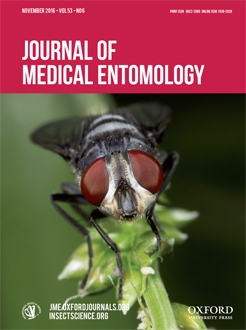The spread of Aedes albopictus (Skuse) eastward in the mid-1980s from its initial establishment in Houston, TX, was associated with rapid declines and local disappearances of Aedes aegypti (L.) in Gulf Coast states and Florida where annual larval surveillance during the early 1990s described temporal and spatial patterns of competitive displacements in cemeteries and tire shops. Approximately 20 yr later in 2013–2014, we re-visited former collection sites and sampled aquatic immatures of these two species from tire shops in 10 cities on State Route 441 and from 9 cemeteries from Lakeland to Miami in southwest Florida. In the recent samples Ae. aegypti was recovered from three central Florida cities where it had not been detected in 1994, but its northern limit on Rte. 441, Apopka, did not change. Other evidence, such as trends at a few cemeteries, suggested a moderate resurgence of this species since 1994. Cage experiments that exposed female progeny of Ae. aegypti from recent Florida collection sites to interspecific mating by Ae. albopictus males showed that females from coexistence sites had evolved resistance to cross-mating, but Ae. aegypti from sites with no Ae. albopictus were relatively susceptible to satyrization. Habitat classifications of collection sites were reduced by principal component (PC) analysis to four variables that accounted for > 99% of variances; PCs with strong positive loadings for tree cover and ground vegetation were associated with collection sites yielding only Ae. albopictus. Within the coexistence range of the two species, the numbers of Ae. aegypti among total Aedes collected were strongly correlated in stepwise logistic regression models with two habitat-derived PCs, distance from the coast, and annual rainfall and mean maximum temperatures at the nearest weather station. Subtle increases in the range of Ae. aegypti since its previous displacements are interpreted in the context of the evolution of resistance to mating interference, realized versus fundamental niches of the two species, and persisting competition with Ae. albopictus.
BioOne.org will be down briefly for maintenance on 17 December 2024 between 18:00-22:00 Pacific Time US. We apologize for any inconvenience.
How to translate text using browser tools
4 August 2016
Coexistence of Aedes aegypti and Aedes albopictus (Diptera: Culicidae) in Peninsular Florida Two Decades After Competitive Displacements
L. Philip Lounibos,
Irka Bargielowski,
María Cristina Carrasquilla,
Naoya Nishimura
ACCESS THE FULL ARTICLE
It is not available for individual sale.
This article is only available to subscribers.
It is not available for individual sale.
It is not available for individual sale.

Journal of Medical Entomology
Vol. 53 • No. 6
November 2016
Vol. 53 • No. 6
November 2016
competition
habitat preference
mating interference
satyrization
surveillance




